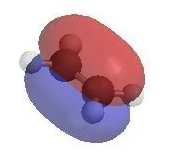|
Structure and Preparation of Alkenes. Elimination Reactions |
|
Structure and Preparation of Alkenes. Elimination Reactions |
Alkenes
Nomenclature:
Functional group suffix = -ene (review)
Simple 1,2-alkenes can be described as cis- or trans- (review)
More complex alkenes are best described as E- or Z- based on the Cahn-Ingold-Prelog
priority rules (review)
Stability:
There are 3 factors that influence alkene stability:
1. Degree of substitution, i.e. how many alkyl groups are attached to the C=C ? More highly alkylated alkenes are more stable, so
tetra > tri > di > mono-substituted.
2. Stereochemistry: trans > cis due to reduced steric interactions
when R groups are on opposite sides of the double bond.
3. Conjugated alkenes are more stable than isolated alkenes.
| more stable than | ||||
|
|
|
|||
 |
|
|
 |
| © Dr. Ian Hunt, Department of Chemistry |